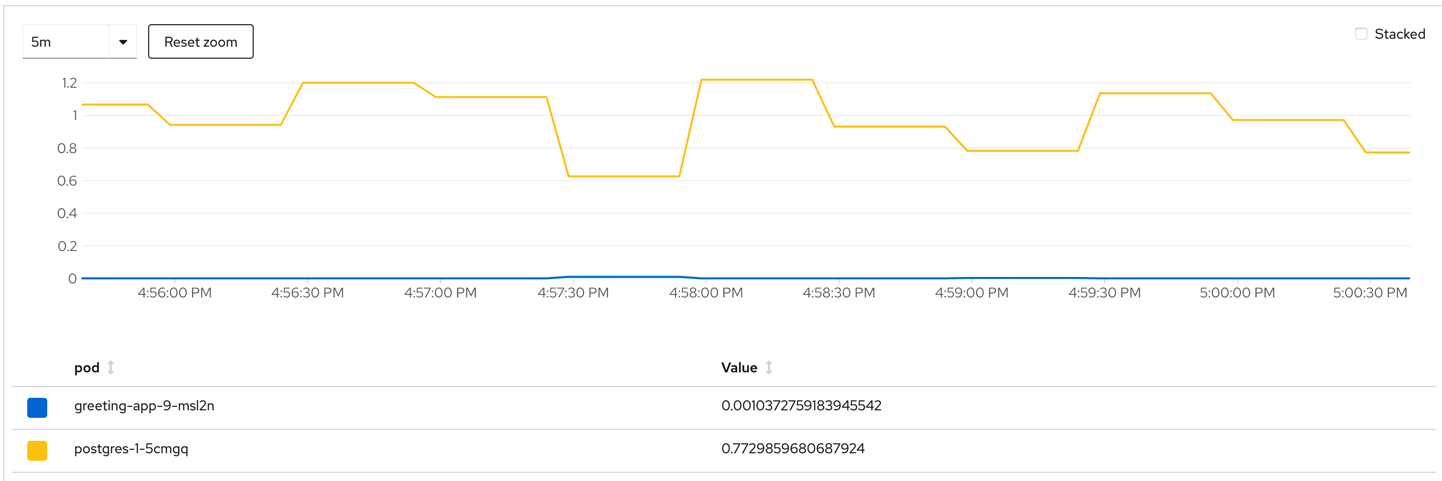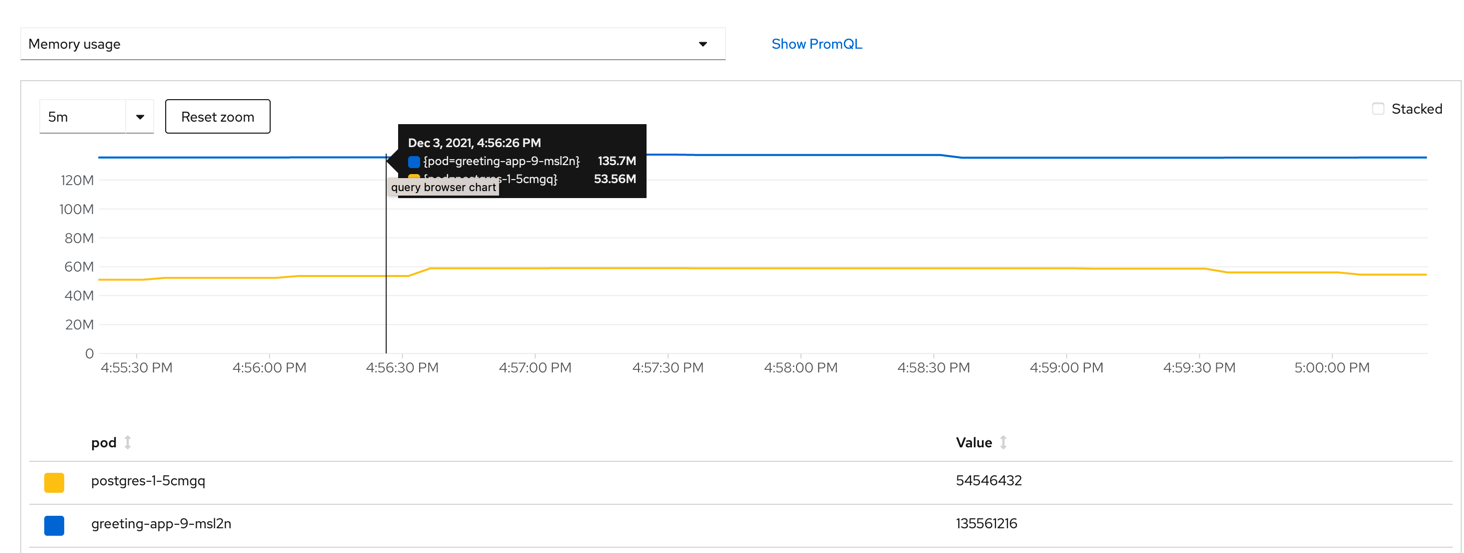Adjust resource quotas
By default, containers run with unbounded compute resources on a Kubernetes cluster. Developer Sandbox is managed OpenShift environment, its cluster resources are tailored per development needs.
Discovering project resource limits
With resource quotas, cluster administrators can restrict resource consumption and creation on a namespace basis.
There will always be concerns that one Pod or Container could monopolize all available resources.
To avoid that, within a namespace, a Pod or Container can consume as much CPU and memory as defined by the namespace’s/project’s resource quota.
To discover the resource quota established for your namespace/project you can run the following command:
oc get resourcequotaAt namespace/project level a LimitRange policy is employed to constrain resource allocations (to Pods or Containers).
You can find out the LimitRange established for a namespace by running oc get limitrange and ask for its description via:
oc describe limitrange resource-limitsThe output should be something similar to:
Name: resource-limits
Namespace: anasandbox-dev
Type Resource Min Max Default Request Default Limit Max Limit/Request Ratio
---- -------- --- --- --------------- ------------- -----------------------
Container cpu - - 10m 1 -
Container memory - - 64Mi 750Mi -The above LimitRange has enforced the default request/limit for compute resources in the namespace and automatically injects them to Containers at runtime.
Adjusting container resources
By using a tool called hey, you can run a load test on your server and see how your system performs under different circumstances.
Let’s run a hey command against the route exposed by previous deployment:
export ROUTE_URL=http://$(kubectl get route greeting-app -o jsonpath='{.spec.host}')
hey -n 10 -c 4 -v $ROUTE_URL/messagesIn the Developer Sandbox click on Observe and select the Metric tab.
You can select CPU Usage or Memory Usage query to check the resources consumed by each of your pods:


Based on that you can adjust your container resources in application.properties:
# Configuration file
# key = value
quarkus.openshift.resources.limits.cpu=200m
quarkus.openshift.resources.limits.memory=280Mi
quarkus.openshift.resources.requests.cpu=100m
quarkus.openshift.resources.requests.memory=140MiThe resources in target/kubernetes folder will be reworked at compile time and contain these new definitions.
You can now deploy the changes by using the command:
mvn clean package -Dquarkus.kubernetes.deploy=true -Dquarkus.container-image.push=true